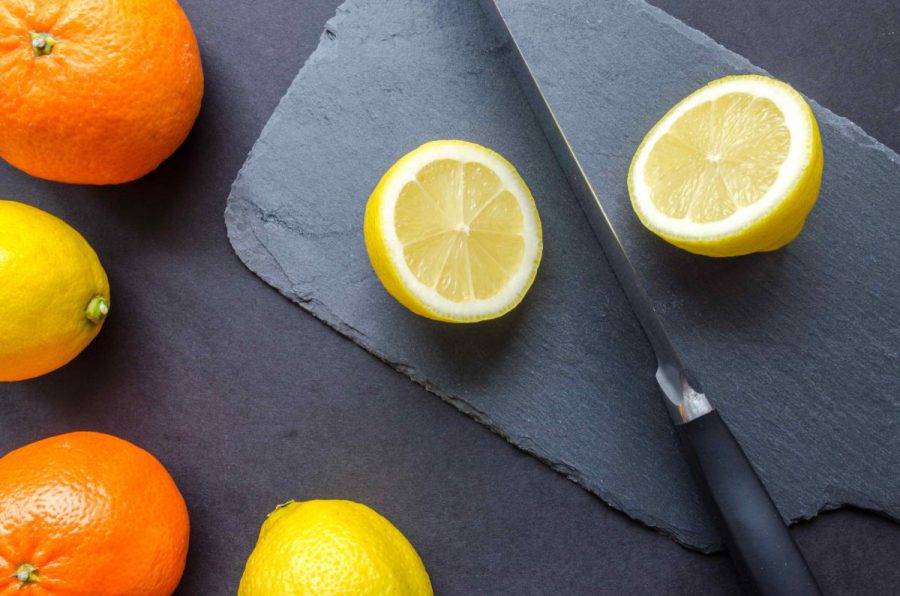Sharp knives save lives—or at least they save fingers. Keeping tools in prime condition is integral to personal safety as well as excellent job performance. Check out this quick guide for tips on maintaining the peak performance and cutting edge of your knives
Test your knife’s edge Hold a folded (but not creased) sheet of newspaper or copy paper by one end. Lay the blade against the top edge at an angle and slice outward. If the knife fails to slice the paper cleanly, try honing its edge with a steel.
How to use a steel Maintaining your blades with a steel, or sharpening stick, is simple once you know how.
- Hold the steel vertically, with its tip set firmly on the counter, and place the heel of the blade against the top of the steel. Tip the knife point slightly upward.
- Apply even, light pressure while sliding the blade down the length of the steel at a 15-degree angle. Using a fluid motion, pull the knife toward your body so that the middle of the blade touches the middle of the steel.
- Pass the tip of the blade over the bottom of the steel.
- Repeat on the other side of the blade, four or five strokes on each side, for a total of eight to ten alternating passes. This should realign the sharpened edge—also called the “burr.”
If your steel doesn’t straighten the burr, then it needs to be sharpened. Choose between an electric or manual sharpener. The manual option is easier to store and less expensive, but also less precise. Electric sharpeners cost more, but are quicker and provide a finer edge.
Using a Manual Sharpener
There are two types of manual sharpener: those with the abrasives within a V-shaped chamber or with the abrasives on non-motorized wheels. Both are simple to use.
- Pull the blade through the chamber while applying even pressure. Both sides of the knife blade will be sharpened simultaneously.
- Follow the manufacturer’s instructions for your specific machine.
But make sure to choose your manual sharpener with care. Avoid V-shaped sharpeners, since they hold the knife at only one point and vibrate during sharpening. Vibrations create a wavy blade, eventually wearing down the blade’s bevel. Once the bevel of a blade is gone, an electric sharpener is your only option to thin and reshape your edge.
The best heavy duty tungsten manual sharpeners will secure the knife at 4 points, which cuts down on those vibrations that V-shaped sharpeners are prone to. A good tungsten manual sharpener should last up to 100x longer than a V-shaped sharpener, making a well-researched knife sharpener a good long-term investment!
Using an Electric Sharpener
The abrasives of electric sharpeners are on motorized wheels that spin against the blade.
- Turn on the sharpener and, holding your knife securely but lightly, pull the blade through the desired slots using slow, smooth motions.
- Alternate sides to sharpen your entire blade. The number of strokes it takes to restore a damaged knife to like-new condition varies by machine and also depends on the quality of the knife, the thickness of the blade, and the hardness of the steel.
Storing Knives to Keep Them Sharp Storing knives safely can boost the blades’ longevity and protect both their edges and your skin. But to ensure their longevity and sharp edge, make sure to hand wash and dry knives before storing. Then store them safely using one of the following methods.
- Universal knife blockshold a variety of knives in a compact space.
- Magnetic knife strips hangon the wall for easy access. They take up less space and accommodate any knife size.
- Individual knife covers allow you to safely store knives in a drawer.
Sharp knives are essential to every kitchen, from residential to commercial. Following these tips will help keep both you and your knives in top working condition, and your presentation—stunning.


